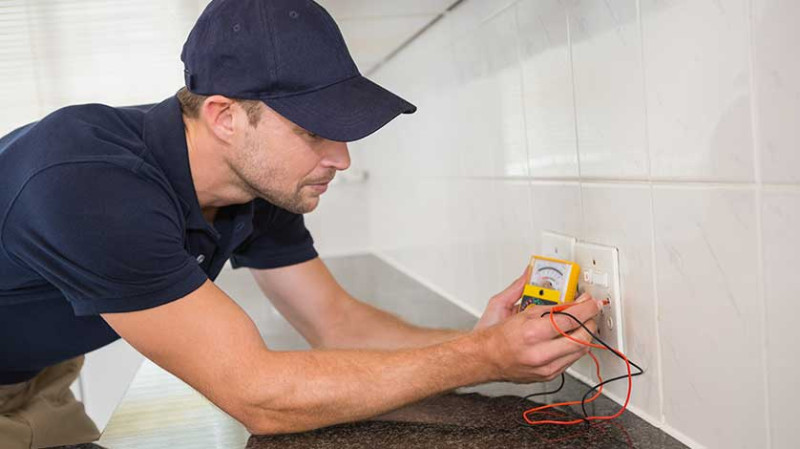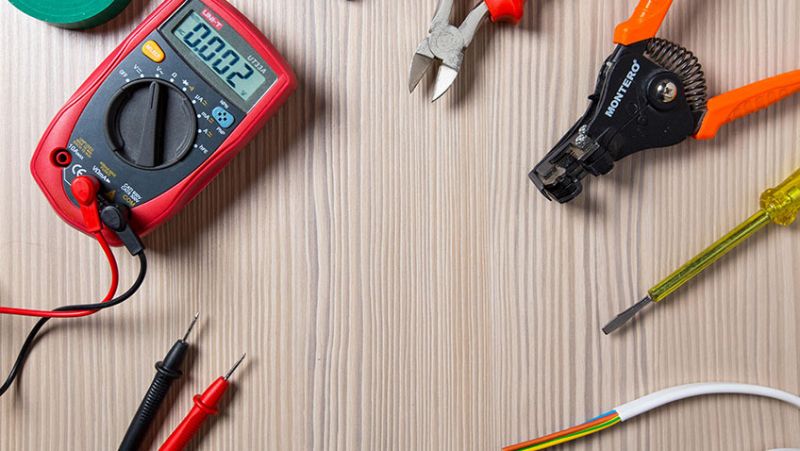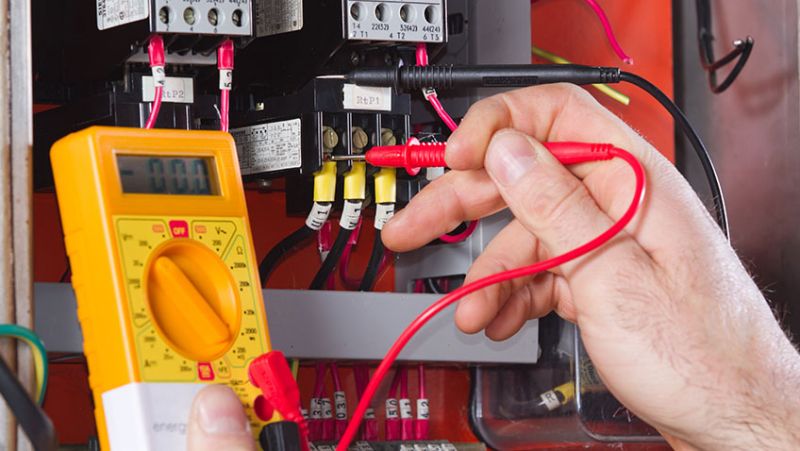
Looking to save on energy bills and reduce your environmental footprint? Whether you're a DIY enthusiast updating your first home, an interior designer advising clients, or a professional tradesperson working on site, improving energy efficiency should be top of your list. In this guide, we'll walk you through 20 practical ways to slash your energy consumption - saving you money and making your home a more sustainable space. Most of these tips are budget-friendly and easily doable, even for beginners.
1. Switch to LED Lighting
One of the simplest yet most effective tips? Swap out old incandescent and halogen bulbs for LED lighting. LEDs use up to 90% less energy and last far longer, sometimes over 10 years with regular use. That's less bulb-changing and lower electric bills.
If you're a designer or decorator, note that modern LEDs now come in a variety of colour temperatures and dimmable options, giving you complete control over ambience without compromising on energy efficiency.
Better yet, switching to LED lighting in a typical UK home can save around £40 - £60 a year. Focus on rooms with the highest daily use like the kitchen, living room, and bathrooms, for instant impact.
2. Install a Smart Thermostat
Installing a smart thermostat like Nest or Hive can help you optimise heating based on your schedule, cutting down on energy waste. These devices learn your habits and adjust heating accordingly without needing constant manual input.
DIYers will find installation relatively straightforward, though you may need a qualified gas engineer to connect your existing boiler system. For renters or those with restrictions, many models are now wireless, which helps with portability and installation.
On average, smart thermostats can save homes in the UK up to £120 annually, depending on usage patterns.
3. Draught-Proof Doors and Windows
Cold draughts from windows, loft hatches, and doors can cause your heating system to work overtime, driving up energy costs. An effective solution? Draught-proofing strips, door sweeps, or even heavy curtains during colder months.
This inexpensive and easy task is perfect for skilled tradespeople, but is well within the DIYer's reach. Draught-proofing can knock £20 - £35 a year off your heating bill - and the results can be felt instantly.
4. Upgrade to Double or Triple Glazing
Old single-pane windows are not energy-efficient and can leak heat. Upgrading to double or even triple-glazed units can significantly reduce heat loss while also improving sound insulation.
Although this upgrade may have a higher initial cost, it can pay for itself over time through improved efficiency and property value, appealing for those in property development or renovation. Energy savings could be as much as £110 - £150 annually for a typical semi-detached house.
5. Layer Your Insulation
A well-insulated home retains more warmth in winter and stays cooler during summer, reducing the need for heating and cooling. Start with your loft, which sees significant heat loss if not properly insulated.
Wall insulation, especially for cavity walls, is also crucial. Professional installers can complete this in most UK homes quickly. Solid wall insulation, while more complex, is ideal for older properties and period homes still lacking modern insulation.
Don't forget to insulate your hot water tank and pipes to minimise heat loss - affordable pipe lagging material is available at local hardware stores.
6. Choose Energy-Efficient Appliances
When your fridge freezer or washing machine reaches the end of its life, replace it with an energy-efficient model rated A++ or higher. Modern appliances use as much as 40% less energy than older alternatives.
For interior designers or self-builders working on new kitchens, choosing energy-efficient devices is a smart investment that clients will thank you for when their bills come in.
7. Install Smart Plugs and Power Strips
Gadgets on standby can quietly drain energy 24/7. Smart plugs and timer-based power strips can cut standby waste, especially on entertainment units, gaming setups, and office plugs.
An average UK household can save about £30 per year by turning off devices completely when not in use.
8. Optimise Boiler Efficiency
Your boiler is the heart of your heating system. Servicing it annually ensures it runs efficiently and safely. Consider upgrading to a modern condensing boiler if your system is over 10 years old.
You can also adjust the flow temperature or upgrade your controls to include zone heating - so you're not heating empty rooms unnecessarily.
9. Use Thick Curtains and Blinds
Look for thermal curtains or thick-lined blinds, especially for north-facing or draughty windows. They provide an extra layer of insulation and help keep warmth in during those chilly British winters.
For creative types, consider customising made-to-fit curtain linings or Roman blinds to match your aesthetic while improving efficiency.
10. Wash Clothes at 30°C
A small change with big impact. Lowering your washing machine temperature can reduce energy usage by nearly 40%. Most detergents function just as effectively at 30°C, and you'll extend the life of your clothes in the process.
11. Air Dry Clothes
Tumble dryers are energy hogs. During summer months or on clear winter days, use a rotary line or indoor drying rack to air dry clothes instead. If space allows, install a ceiling-mounted drying rack in utility areas or over a bath.
12. Turn Off Lights in Empty Rooms
This may sound obvious, but it's often neglected. Installing motion sensors in hallways or bathrooms ensures lights aren't left on unnecessarily, especially in shared spaces or holiday lets. It's a straightforward upgrade for tradesmen or homeowners with basic electrical knowledge.
13. Utilise Solar Energy
Although the UK isn't known for its sunshine, solar panels can still generate a significant amount of power. With Smart Export Guarantees (SEG), you can even sell unused electricity back to the grid.
Whether you install solar PV panels or solar water heaters, it's a high-impact investment for long-term sustainability and future-proofing your property.
14. Zone Your Heating
Installing thermostatic radiator valves (TRVs) or using smart multi-zone thermostats allows better control over room temperatures. Why heat the entire house when you're only using one room?
This tip is particularly useful in larger properties or shared housing situations where heating requirements vary from room to room.
15. Insulate Floors
Suspended timber floors present heat-loss challenges. Lifting floorboards and installing insulation rolls or boards beneath is a more involved job, but something skilled tradesmen or experienced DIYers can tackle.
For an easier approach, rugs and underlays can stop cold air from penetrating through parquet or tile floors, offering both comfort and energy savings.
16. Cook Efficiently
Use lids on pots, cook in batches, and match pot sizes to hob rings to maximise energy usage. Consider investing in a slow cooker or air fryer, both are more energy-efficient than a traditional oven and ideal for busy young professionals or families.
17. Use Tap Aerators
Fitting water-saving aerators to taps or using water-efficient showerheads reduces hot water usage. Less water used = less energy required to heat it. An excellent low-cost energy saver, especially in larger households.
18. Embrace Natural Light
Rearrange furniture to maximise daylight hours. South-facing windows provide ample passive heating and lighting. Skylights not only increase natural lighting levels but reduce the need for artificial lighting during the day, a major bonus in kitchens and loft conversions.
19. Switch to a Green Energy Tariff
Some savings come from smarter decisions, not just hardware. By switching to a green energy supplier, you're supporting renewable energy, even if your efficiency doesn't change.
Choose a provider with UK-based wind or solar energy sources for an even smaller carbon footprint. If you manage flats, holiday lets, or HMO properties, this can be part of your eco-friendly branding.
20. Educate Everyone in the Household
All the upgrades in the world won't save as much as cultivating good habits. Involve family members, tenants, or housemates in energy-saving strategies. Post a chart on the fridge, or use an app to track progress and rewards.
| Estimated Energy Saving | Annual Money Saving (Approx) |
|---|---|
| LED Bulbs | £40 - £60 |
| Smart Thermostat | £75 - £120 |
| Draught Proofing | £20 - £35 |
| Wall + Loft Insulation | £120 - £275 |
| Energy Efficient Appliances | £45 - £100+ |
Final Thoughts
Improving your home's energy efficiency is a smart step toward a greener lifestyle, and it pays off financially too. From quick wins like LED bulbs and tap aerators, to larger projects like reglazing and solar panels, there's something for every budget and skill level.
If you're part of an industry that advises homeowners, be it as a designer, architect, or building contractor, these recommendations deliver added value to your clients, improve EPC ratings, and even boost property value.
Saving energy isn't just about the planet. It's also about making your space more comfortable, affordable, and future-proof for years to come.




